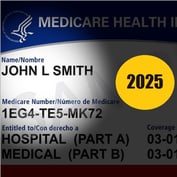The Patient Protection and Affordable Care Act (PPACA) exchange funding rules may be putting more pressure on the public exchange managers to compete with traditional health benefits brokers, plan administrators, and plan technology services vendors.
Jeffrey Kissel, executive director of the Hawai’i Health Connector, Hawaii’s state-managed exchange, talked about some of the options that exchange is consider recently during a hearing organized by the Hawaii House Health Connector Legislative Oversight Committee.
The exchange managers also talked about their options in their 2014 annual report.
The exchange is now providing qualified health plan (QHP) coverage for about 15,000 people.
Kissel noted that, even though the Hawaii exchange still has $50 million of its $204 million in federal grant money left, it must use that money for exchange development and improvement efforts and cannot use the grant money to cover 2015 maintenance operations.
See also: DC considers how to fund exchange
Managers expect the exchange to spend about $58 million this year, $16 million in 2016, and about $13 million per year in 2017 and later years.
The exchange charges an assessment on exchange plan issuers equal to 2 percent of plan premium revenue, but it collected only about $100,000 in user fees during the first half of 2014, and it does not expect to collect more than $10 million in user fees per year until 2020.
“Enrollment, while growing, is unlikely to produce sufficient revenue to cover costs unless operations are curtailed to the point where growth is in jeopardy,” Kissel said, according to the written version of his hearing testimony.
Here is a look at strategies the exchange might use to bridge the gap between issuer assessment revenue and operating costs.

1. Job hunters
Some insurers like to compete for the business of workers who have left group health plans by selling them short-term health insurance, or by selling them individual major medical coverage outside the exchange system.
Kissel says the exchange itself wants to compete harder for COBRA market business. In Hawaii, in October, there were 27,000 people who were unemployed and eligible for COBRA coverage.
Many of those people are eligible for premium assistance, and selling them coverage would be a chance to sell their dependents coverage, Kissel said.








 January 07, 2015 at 01:53 PM
January 07, 2015 at 01:53 PM














